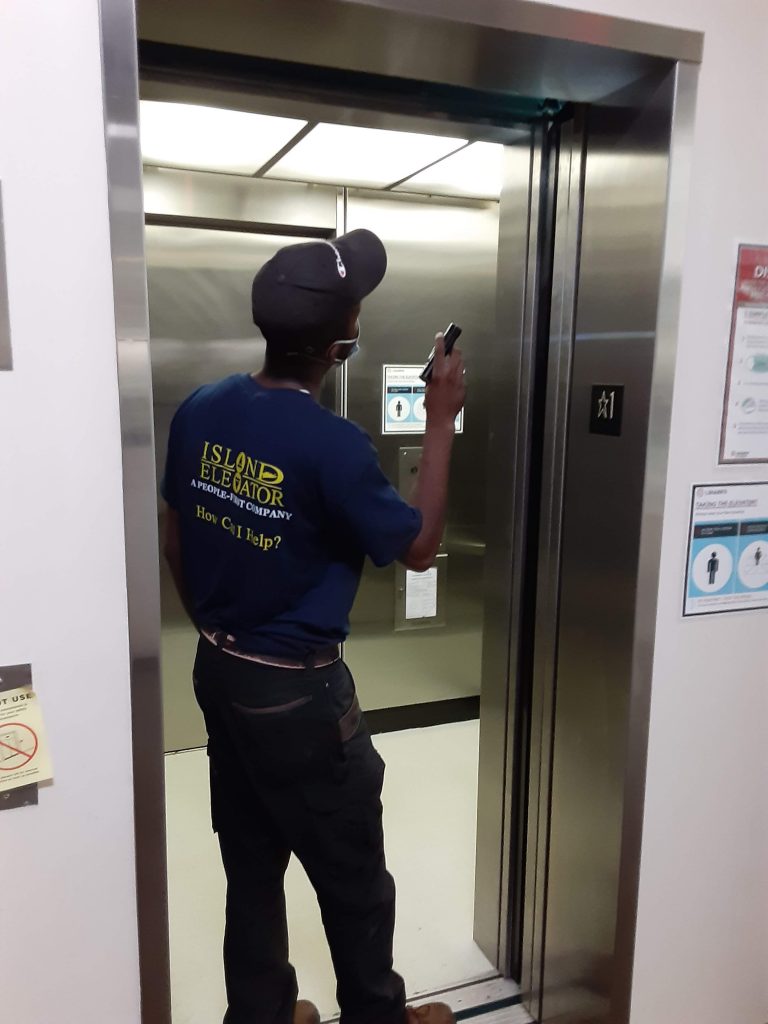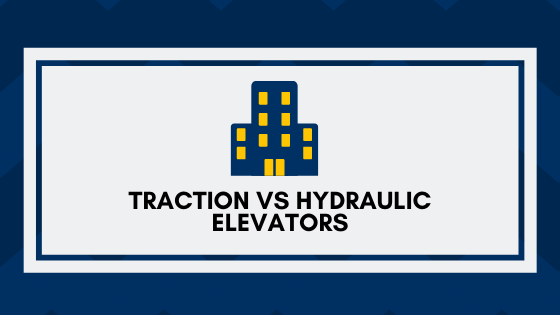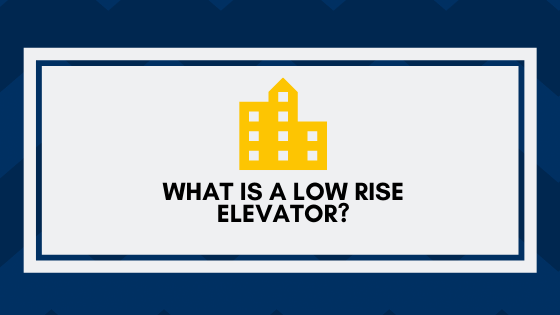
It’s hard to know what kind of elevator you’re riding unless you’re able to see the actual mechanics going on behind the scenes. There are a variety of commercial elevator manufacturers that offer different elevator types including traction and hydraulic systems, but it’s not likely that riders would even notice a difference.
There are different types of elevators for several reasons. Some elevators are a better fit for smaller buildings while others are designed for high-rise transportation and efficiency of travel time. As two of the most common systems used in commercial buildings today, here’s our explanation of traction elevators vs. hydraulic elevators.

Traction Elevators
The major difference between traction and hydraulic elevators is in the way the systems transport the cab. With traction elevators, the cab is raised and lowered by traction steel ropes or belts on a pulley system. Compared to hydraulic systems, traction elevators:
- Uses less energy
- Serve mid to high-rise buildings
- Ride smoother
- Traction elevators use a counterweight to offset the weight of the cab and occupants. With this design, the motor doesn’t have to move as much weight, making it much more energy efficient than hydraulic systems.
Traction elevators are the most common type of elevator. They can be geared or gearless and both model types are driven by alternating current (AC) or direct current (DC) electrical motors.

Geared Elevators
In geared elevators, there is a gearbox attached to the motor that drives the wheel and moves the ropes. Geared machines can reach speeds up to 500 ft./min. These models will have a middle-of-the-road cost in terms of initial investment, maintenance costs and energy consumption.
Gearless Elevators
In gearless traction elevators, the sheave is attached directly to the end of the motor. These models can reach speeds up to 2,000 ft./min. These models have a high initial cost investment and average maintenance costs. They are, however, more energy efficient than geared traction elevators.

Hydraulic Elevator
Unlike traction systems, hydraulic elevators don’t use overhead hoisting machinery. Instead, these elevators lift a cab by using a fluid-driven piston that is mounted inside of a cylinder. The necessary fluid has traditionally been oil-based but can be replaced with vegetable oil to decrease the environmental impact.
Compared to traction elevators, hydraulic systems are:
- More affordable to install
- Less expensive to maintain and repair
- Better for transporting heavy loads
- Intended for low-rise applications
- Hydraulic elevators are most often found in buildings that serve up to five stories because they operate at slower speeds than other types of elevators — typically 150 ft./min. or less.
Another reason for their height limitations is that it takes a lot of energy to raise an elevator cab several stories. To reach high floors with a hydraulic elevator, you would need a longer cylinder and piston.

There are two different types of hydraulic elevators
Holed
The holed type of hydraulic elevator has the hydraulic cylinders placed inside of a drilled hole and allows up to 60’ of travel.
Holeless
Holeless hydraulic elevators do not require a drilled hole, making this type of elevator ideal for existing buildings or in areas where drilling would be too difficult or expensive. Hole-less elevators shouldn’t be installed anywhere that requires more than 40’ of travel.
Benefits and drawbacks:
Below is a list of benefits and drawbacks for both types of elevators to give you a better understanding of your options.
Hydraulic Elevators
Benefits:
- Shorter install time frame
- Least expensive to install and maintain
- Capable of moving increased weights (i.e. custom cabs)
- Lower pit and overhead requirements with standard travel
- No crane/roof access required
- Above-ground models available with or without machine rooms (pre-engineered only)
Drawbacks:
- Limited to low and mid-rise buildings
- Machine room required for in-ground applications (viewed as a PRO when service is needed)
- Larger power requirements
- 150 ft./min. max up-speed

Self-Supported MRL (Common Traction Elevator)
Benefits:
- The total travel above 60’
- Reduced control room requirements
- Reduced motor size
- Potentially a quieter ride
Drawbacks:
- Higher investment cost to install and maintain
- Industrial crane is typically required
- Limited on the cab weights
- Limited on the cab capacities
- Increased overhead and pit requirements
- Longer install time to schedule

Island Elevator is Ready to Help!
Island Elevator is here to help you understand all facets of your Elevator Repair, Maintenance, & Modernization costs in the new year. Our team is here to help ensure your home and business vertical transportation equipment receive the regularly scheduled maintenance necessary to help you avoid a major catastrophe, reduce the possibility of a costly repair, and ensure the safety of your passengers, tenants, and family.





